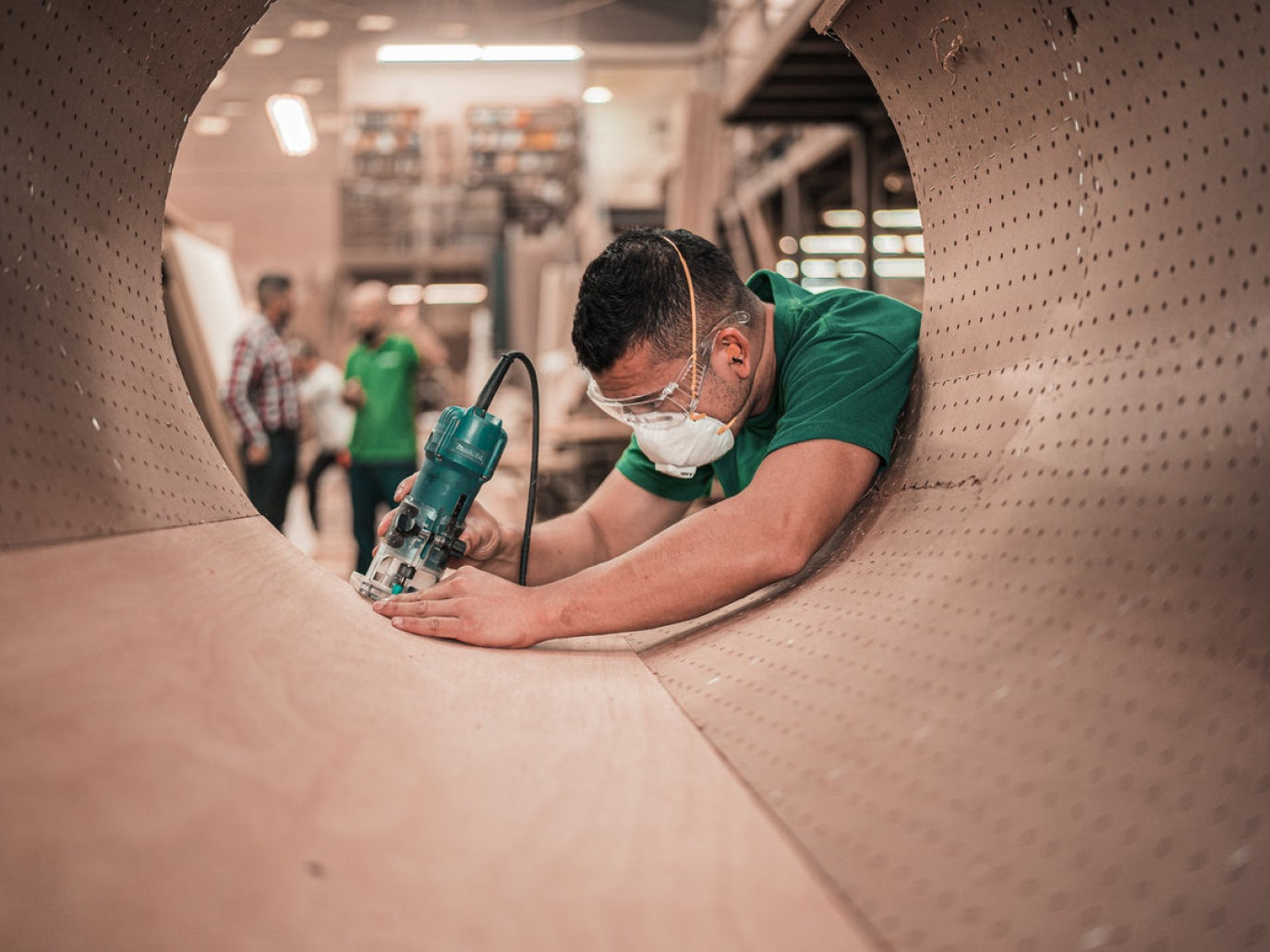In recent months, policies and initiatives at the European and global level have emphasised the potential of remanufacturing as the key model for the circular economy, useful in extending the lifespan of products and preserving value in the economy.
In April 2021, the Remanufacturing Industries Council (RIC) organised Reman Day, a series of online webinars celebrating one of the foundational Rs of the circular economy: remanufacturing. Also known as the backbone of the circular economy, remanufacturing is an industrial practice that involves “returning a product to at least its original performance with a warranty that is equivalent or better than that of the newly manufactured product” (source: Remanufacturing Market Study).
The European Remanufacturing Council – which counts Enel among its members – is the sector’s leading expert body in Europe, created following the example of the US-based RIC. To fully understand the potential and prospects for remanufacturing, Renewable Matter interviewed David Fitzsimons, the director of the European Remanufacturing Council, who has over 25 years of experience in the sector.

Where are remanufacturing activities mostly concentrated today?
Traditionally, 90% of remanufacturing activities take place in the business-to-business sector.
Therefore, it is an industrial activity that could be termed commercial. However, the B2C (business-to-consumer) side is also growing, especially for products such as smartphones. I believe there will be a continuous increase, driven by the right to repair movement, in consumer goods seeing their lifespan extended thanks to both local small-scall repair franchises and large industrial-scale factories at the national and international level. While in the former case we can talk about remanufacturing as repair, in the second case we can talk about remanufacturing as “re-production”.
Which elements have the greatest potential to accelerate the spread of remanufacturing activities?
Robotics and digital technologies have great potential, they could vastly expand possibilities across the sector. There are great opportunities in the automotive sector, where the WEF is working on the Circular Cars Initiative. The problem is that remanufacturing often comes into play only in the post-sale phase. There is no awareness of the fact that it could also contribute during the production of new vehicles. If this were to change, the potential would be enormous. For this to happen, legislation changes and some economic incentives are required.
What changes, in particular, are you referring to?
To the new and imminent initiative on sustainable products that I am currently contributing to in Brussels. There is a lot to do at the legislative and political level. We have developed many policies in the right direction over the past 20 or 30 years, and now is the time to look to better design and extending the lifespan of products. The challenge set by the European Commission’s current Sustainable Product Initiative is to develop a series of policies that make remanufacturing a profitable activity for businesses. It will take time, but I think we will see a constant transfer of expertise in the sector, which is currently worth 30 billion euro in the EU. It sounds like a lot, but it only accounts for 2% of Europe’s economy. This is why we are trying to make the sector more attractive to investments. It is vital to also make political decision-makers aware of the need for new incentives to support businesses. The EU and the United Nations are very ambitious in this regard, as shown also by the launch of GACERE – Global Alliance on Circular Economy and Resource Efficiency last February. GACERE will help spread policies developed in the EU and the vocabulary used here beyond the borders of the single market.
What are the most interesting sectors for remanufacturing?
In terms of absolute value, I would say undoubtedly aviation, while the automotive sector wins out in terms of volume. The third-largest sector is probably defence, whose true size no one really knows. These are followed by the machinery and off-road vehicles (such as large excavators) sector, then by b2b ICT equipment. Then there is a series of other sectors defined in the Remanufacturing Market Study published by the European Remanufacturing Network and funded by Horizon 2020. It is a crucial sector for large companies like Michelin and Volvo and small businesses like Hetzel, a leading German family-run automatic car gear remanufacturing company.
Which are the most advanced countries?
In terms of national leadership, definitely France. French politicians seem to be well-prepared enough to take risks. The Netherlands and the Scandinavian countries come next. As the United Kingdom has just left the EU, I am expecting relevant policy to emerge this year or next year.
As far as the size of the sector is concerned, Germany is undoubtedly in a leading position, followed by Italy, France, and the United Kingdom, which change their ranking based on the type of product being considered. Poland, meanwhile, is a country that we have previously underestimated. However, we have noticed that many investments are directed at Poland, because it is well-located from a logistical standpoint to supply all of Europe, and it has an excellent road network. Some of our members, such as Lexmark with its remanufactured printer cartridges, have been very happy with the investments they have made in Poland, where many components for avionics and agricultural vehicles are also remanufactured.
Outside of Europe, Canada is one to look out for, its case having recently been studied by RemanCan.
What are the elements around which the future of remanufacturing will play out?
Definitely data. Currently, I see so much data being lost during products’ life cycle, data that do not make it to the manufacturer but that would be vital in extending the lifespan of products if they were shared. During the manufacturing process and up to the point of sale, all possible techniques are implemented to obtain even the smallest added value, even if often the work involves tiny margins for improvement. After the sale, meanwhile, products’ loss of value is catastrophic, and the potential to preserve or restore this value over time is huge. I think that those who will start to look to digital technologies in this sense will gain a major competitive advantage. I am in complete disagreement with the work that McKinsey is doing on lighthouse factories. The Global Lighthouse Network celebrates the use of digital technologies and industry 4.0 by only looking at the efficient use of resources in production facilities. It does not ask what happens once products have left the factory. The entire life cycle is not celebrated, and neither is the supply chain. Fortunately, in contrast with this, I am starting to see companies giving value to this factor. Among them are some Italian machine-tool manufacturers that want to use robotics, or RecoNext, which aims to apply artificial intelligence to sort products that are ready for remanufacturing.
Will there be many jobs created in the sector in the coming years?
I have seen so much speculation on this and do not believe any of it. The starting point is flawed: we should not be led by the possibility of new jobs, but be driven primarily by the possibility of investments. Investments generate jobs, many of which we are not even aware of. We could build large factories, with loads of machines and very little personnel, but the supply chains around them will be transformed and maybe there will be a lot of work created in and around them. This is work that we simply have not been able to measure. I do not believe that it is possible to make concrete predictions in this sense.



